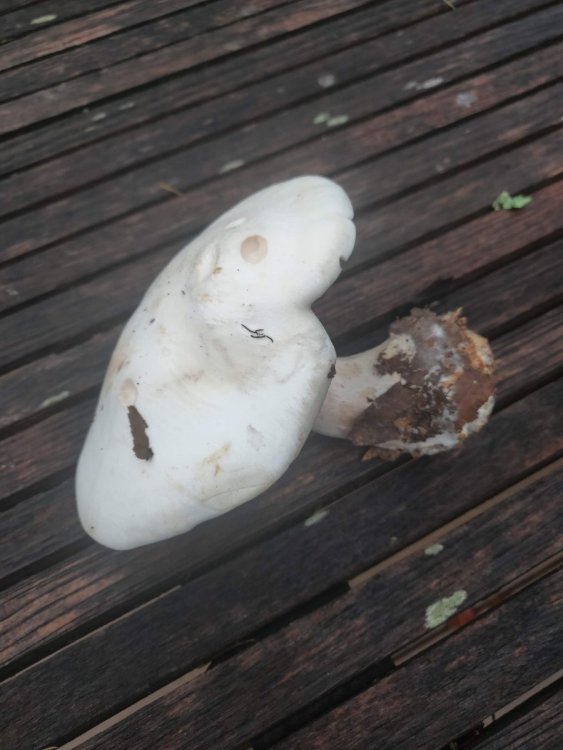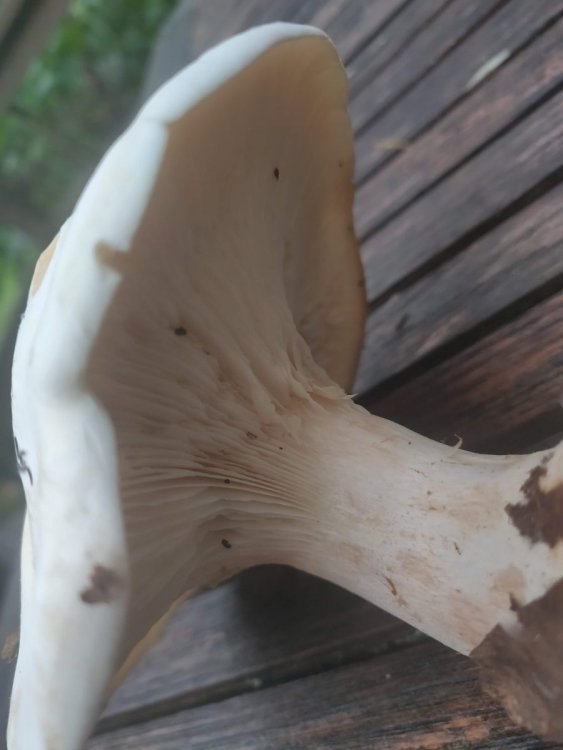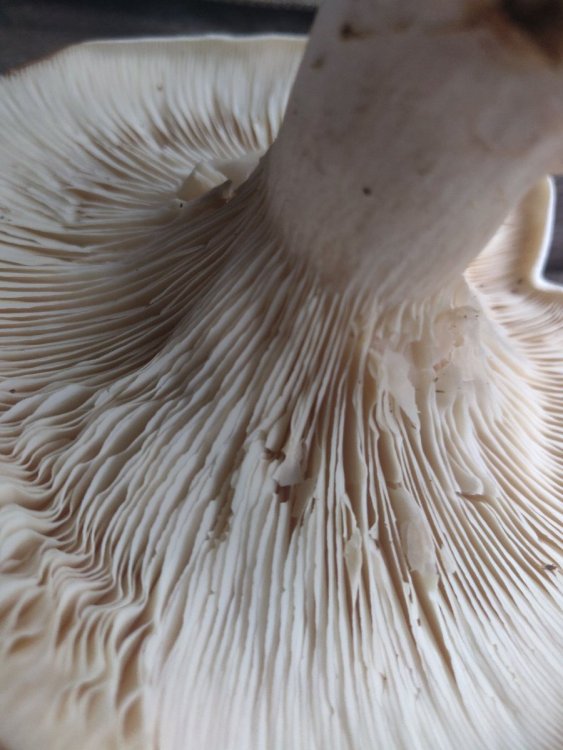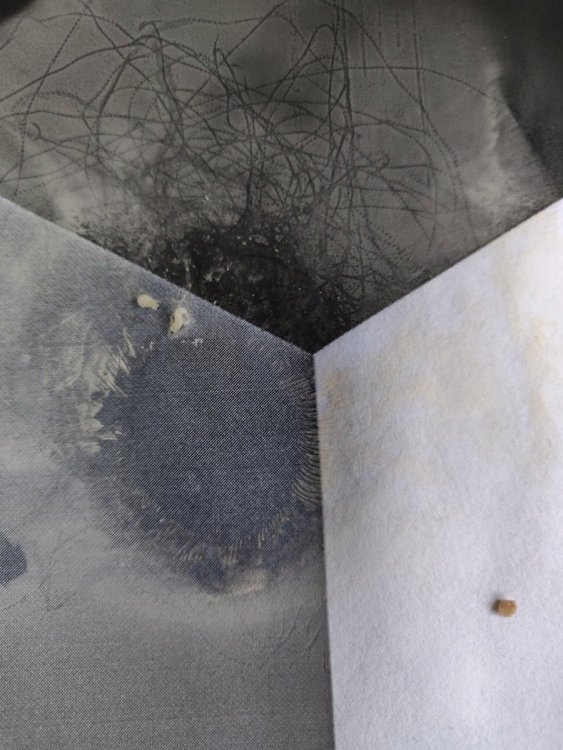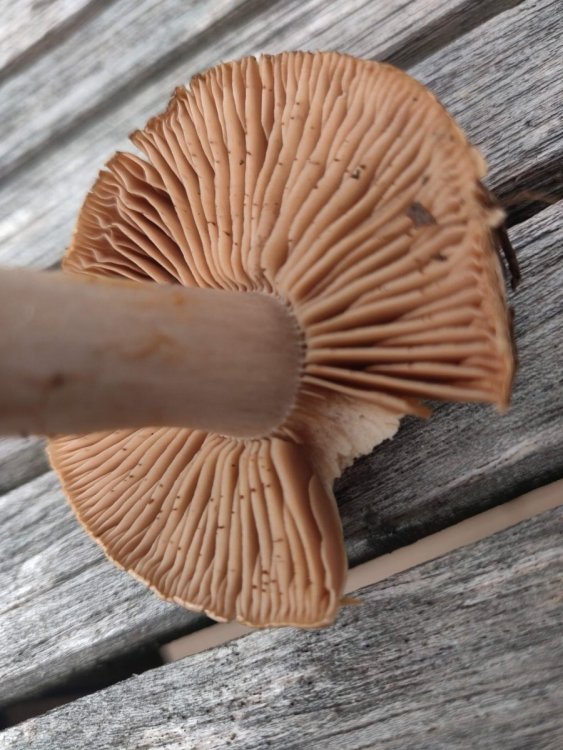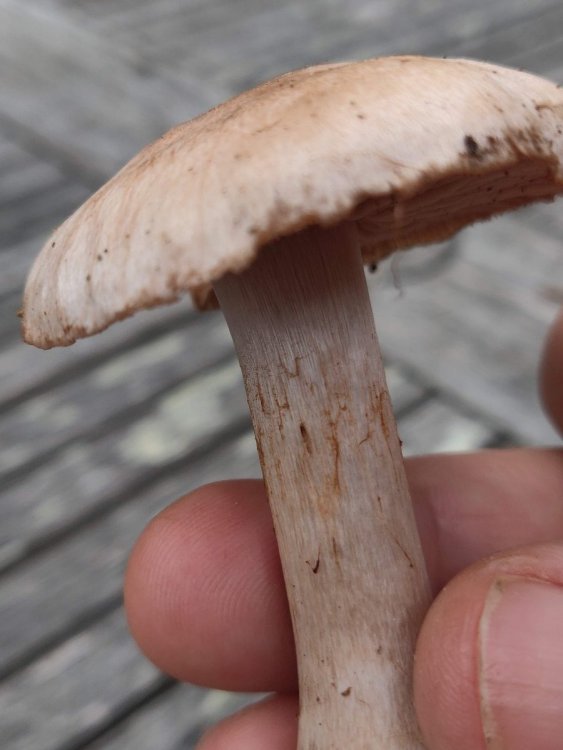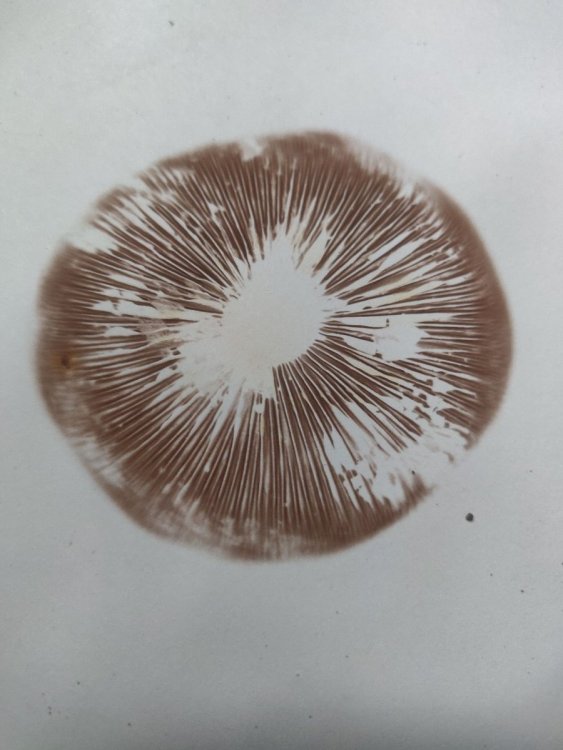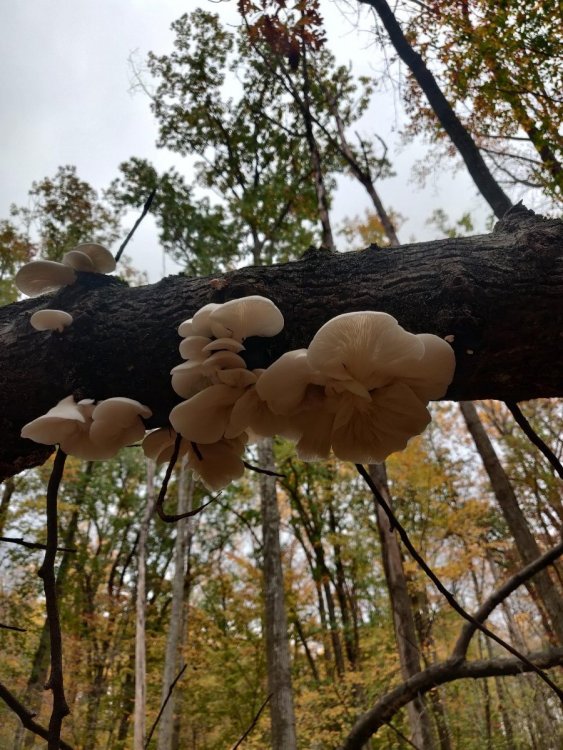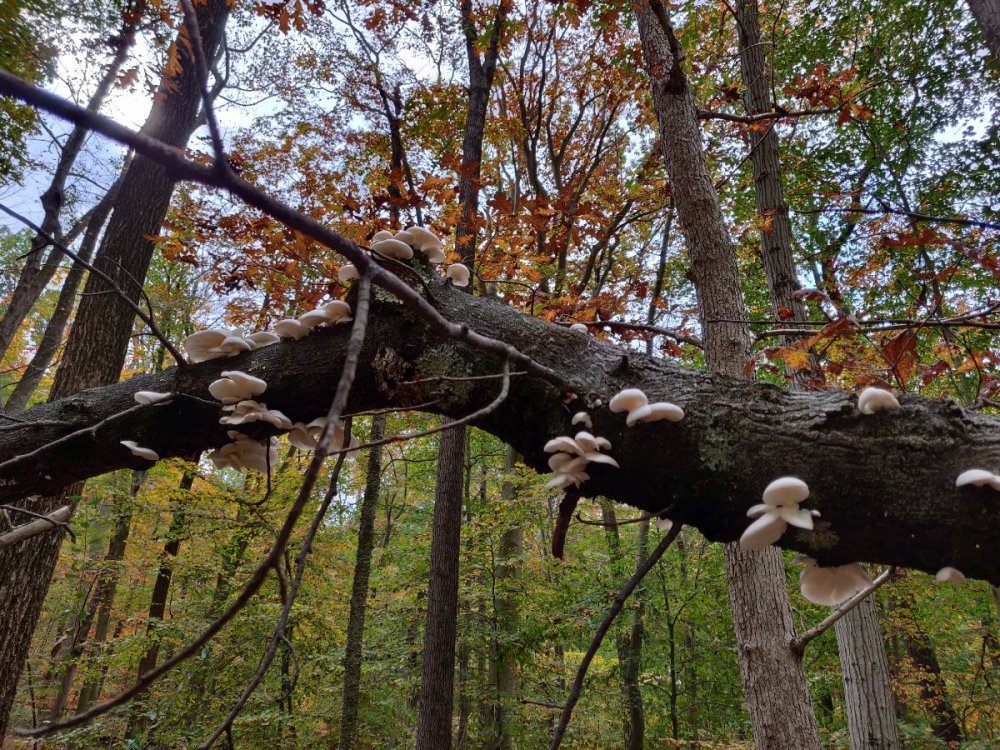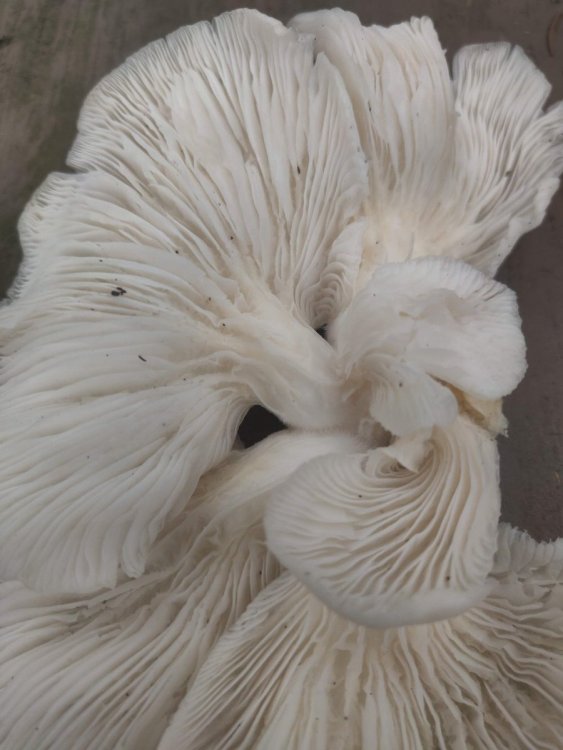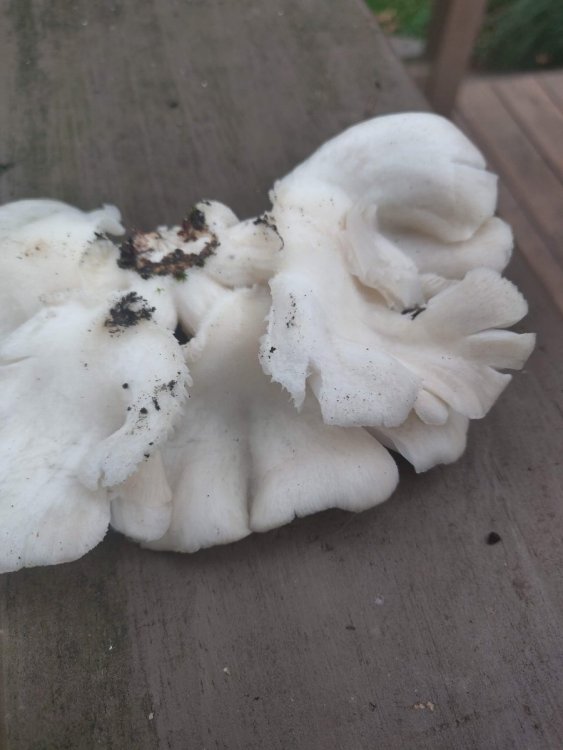-
Posts
45 -
Joined
-
Last visited
Profile Information
-
Location
Hopewell, NJ
-
Interests
Hiking, gardening, traveling, cooking, reading...
Contact Methods
-
Twitter
nope
-
GNUsocial
nope
Recent Profile Visitors
The recent visitors block is disabled and is not being shown to other users.
MicroDoc's Achievements

Pleurotus Junior Member (2/5)
-
MicroDoc changed their profile photo
-
Hey all, This one totally stumps me. It's about 8" long. It's heavy. It smells quite nice (sorry, I'm terrible with describing odors). There is zero evidence of gills even after dissection. The 2nd picture might appear to show some darker color in the stem but that's just the photo-- interior is uniformly white. Any ideas?
-
Hi Arcane, That's too many shrooms for one post. Post one at a time. Also, it's better to post them on the "Identifying Mushrooms" board.
-

Overlapping brown shrooms on a log
MicroDoc replied to MicroDoc's topic in General Mushroom Discussion
Sweet. Maybe a little woody but I'm thinking more like a flower. I probably should nibble and spit. -
These guys smell great. Quite a few of them on a decomposing log. No stem and hairy near the base. Maybe a type of Panellus?
-
Thanks. C. robusta is a winner. I'm 100% not going to eat these but I am curious if this mushroom gets on your table?
-
Fair enough. The key feature for easy identification is the brown gills and spores? I'm looking at Google images and man oh man, that's a varied genus. A lot of them bear little resemblance to each other.
-
I got a bit lost in the woods (in the rain) on Sunday. I wandered into a spot loaded with these white mushrooms growing in deep leaf litter amongst boulders. Some were on the order of 12 to 15 cm in diameter. I thought Clitopilus prunulus due to the way that the gills run right into the stipe and a bit of waviness to the cap edge. Did a spore print expecting to see "pinkish" spores but that didn't happen. Definitely more towards a pale yellow. Any ideas?
-
Any thought on species?
-
Found in the leaf litter close to a bunch of blewits. I'm guessing Cortinarius based off of another recent post in this forum.
-
Thank you Dave!. As a certain comic might say-- "Very nice". Thanks for the links. I'm getting excited about this. It seems like it could work out well for student honor's projects (that is once we are all vaccinated...). I'm seeing several active projects close to me. In fact, the closest appears to be a community college club.
-
Great stuff. As you write above, the morphological variations within a single species can be very confusing- old or young? type of wood? sun exposed or not? substrate differences... just so many factors. I was nodding my head reading that you have less confidence in id because of more experience. That's biology- the more you know, the more that you understand what you don't know and the more aware you become of the complexity and the exceptions. I'm always telling my students that biology is messy and almost anything I tell them will have exceptions. I'm always telling my Biology I students that we are only scratching the surface with every topic we cover. The students who enjoy the complexity and "messiness" of biology, stick with it. The others migrate to other fields. At this point, I only trust the experienced folks on this website especially when it comes to id, especially if I'm thinking of ingesting something. But I'll often go into Google images and plug in a genus and species-- I have to conclude that there exists a significant amount of erroneous information. I've just started acquiring mycology books and I plan to join the NJ club and go on some "forays" with more experienced folks. Anyway, the microscope. I've been offered "retired" microscopes and binocular scopes several times over the years. I always refuse because I'm at the lab several times each week. Why would I need a scope at home? At the present time, I have to get permission from the Dean to even get on campus. Strange times. Next time I'm offered a scope, I'm going to take it. I also have (in non-covid times) access to everything I need to extract DNA from any type of cell but I don't have a budget to buy materials needed for genotyping or sequencing. I'm thinking about that. Small grants are not difficult to get and there is a budget for students doing honors work. I'm thinking about playing with Entoloma abortivitum...
-
A microbiologist should have a microscope... I don't.
-
Agree with Angela- Entoloma abortivitum. I've been finding some snow white ones as well. If yours are like mine, if you cut them in half, you will see some pinkish coloration. I haven't eaten any but my local market was selling these for $30/lb "shrimp of the woods".
-
I'm almost sure that i (finally) found pulmonarius but certain aspects are bothering me. In favor of oyster- short stalks with decurrent gills and the smell is faintly fishy. In favor of angel wings- pure pure white (they have turned slightly off white in the cooler...) and thin edges that fray ~easily. I know that one of the best indications is hardwood vs. conifer. The area is primarily hardwood but with eastern hemlock interspersed. I could not determine the wood. So, what do you think?









